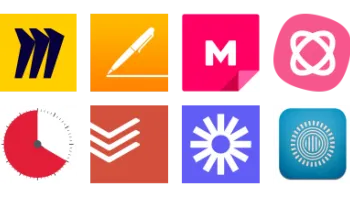
New! Digital Literacy & Well-Being Curriculum
The curriculum you trust – updated for today's digital dilemmas.
Take a look inside 4 images
OneDrive
Pros: A simple, attractive interface and up to 20 GB of free storage make for a great cloud storage solution.
Cons: Without an Office 365 subscription, options for uploading and editing files are limited.
Bottom Line: For those in the MS ecosystem, it's great; it's even a solid choice for those in more, shall we say, indecisive schools mixing iPads and MS computers. However, others will likely prefer more full-featured competitors.
It's a tool with a limited but useful purpose: sharing files. Teachers can use it to share important documents and assignments with students, and students can use it to create portfolios and share with teachers. Teachers might also encourage students to use OneDrive to upload and share photos with their class, though sharing photos directly from the camera roll might be faster. Photo sharing has a lot of assessment possibilities for classes, especially BYOD and 1-to-1, where students can document their work and even annotate photos to further demonstrate and communicate learning.
The Microsoft OneDrive app offers access to the tech giant’s cloud-based sharing service of the same name. When you open OneDrive for the first time, you’re prompted to sync the device’s photos and videos to Microsoft’s cloud. If you choose to sync your photos, you automatically gain access to an additional 3GB of free storage on top of the 12GB that you gain by signing up for free. Referring friends can earn you up to 5GB of additional storage. Upload features for iOS and Android users unfortunately end here.
On a Web browser, OneDrive lets users create folders for any files they’ve uploaded and share existing files with other users via a link or an email. Users can also choose to open files in other apps on the device and use those other apps to make edits to text and images. When a user selects Microsoft-native files (like Word and OneNote documents) in OneDrive, they’re prompted to download a Microsoft app. If the app is already installed, that other app automatically opens. Unfortunately, without an Office 365 subscription, the file is read-only.
The best features of OneDrive may be its camera and video backup capabilities. However, iOS and Android users may already have access to other free cloud-based storage services, so this feature is likely redundant. Because of this, and other redundancies both with native functionality of other devices and competitors like Google Drive, OneDrive is best for people who have already invested heavily in Microsoft products. If you already have an Office 365 subscription, this is a terrific way to view and access your files. Without that subscription, OneDrive still could be a good tool (although one of many options) for teachers who want to upload, organize, and share files with colleagues and with students. Keep in mind that files uploaded in rich-text or text-only formats are the easiest to open and edit in other apps; Microsoft-formatted files (like Microsoft Word documents) can only be edited with a subscription.











